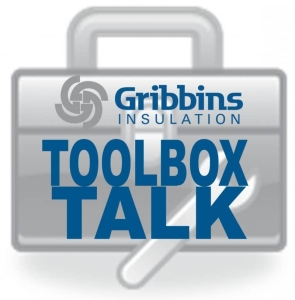Hearing Protection

Gribbins Insulation must institute a training program for all employees with noise exposures at or above the action level (85 decibels) and ensure participation. This training must be repeated annually for each employee in the hearing conservation program. Training must be updated to be consistent with changes in protective equipment and work processes.
Gribbins Insulation must ensure that each employee is informed of the following: the effects of noise on hearing, the purpose of hearing protectors, the advantages, disadvantages and attenuation of various types and instructions of selection, fitting, use and care and the purpose of audiometric testing and an explanation of test procedures.
Physics of Sound
Sound is the physical phenomenon that stimulates our sense of hearing. It is an acoustic wave that results when a vibrating source, such as machinery, disturbs an elastic medium, such as air. In air, sound is usually described as variations of pressure above and below atmospheric pressure. These fluctuations, commonly called sound pressure, develop when a vibrating surface forms areas of high and low pressure which transmit from the source as sound.
The ear is the organ that makes hearing possible. It can be divided into three sections: External outer ear, air filled middle ear and fluid filled inner ear.
The function of the ear is to gather, transmit and perceive sounds from the environment. This involves three stages:
- Modification of the acoustic wave by the outer ear, which receives the wave and directs it to the eardrum.
- Conversion and amplification of the modified acoustic wave to a vibration of the eardrum (transmitted through the middle ear to the inner ear).
- Transformation of the mechanical movement of the wave into nerve impulses that will travel to the brain, which then perceives and interprets the impulse as sound.
Effects of Excessive Exposure
Although noise-induced hearing loss is one of the most common occupation illnesses, it is often ignored because there are no visible effects. Hearing loss usually develops over a long period of time, and, except in very rare cases, there is no pain. What does occur is a progressive loss of communication, socialization and responsiveness to the environment. In its early stages (when hearing loss is above 2,000 Hz) it affects the ability to understand or discriminate speech. As it progresses to the lower frequencies, it begins to affect the ability to hear sounds in general.
The three main types of hearing loss are conductive, sensorineural or a combination of the two.
The effects of noise can be simplified into three general categories:
- Primary Effects, which includes noise induced temporary threshold shift, noise induced permanent threshold shift, acoustic trauma and tinnitus (ringing in the ears).
- Effects on Communication and Performance, which may include isolation, annoyance, difficulty concentrating, absenteeism and accidents.
- Other Effects, which may include stress, muscle tension, ulcers, increased blood pressure and hypertension. In some cases, the effects of hearing loss may be classified by cause.
Use of Foam Ear Plugs
The Noise Reduction Rating (NRR) is the rating of each type of hearing protection should be located on the packaging for that type of hearing protection. If the NRR is 33 (dB) and the environmental noise level is 92 dBA then the noise entering the ear is approximately equal to 59 dBA, if hearing protection is worn correctly.
Fitting Instructions: Hands and plugs should be clean before fitting.
- Step 1 – Roll plug slowly with thumb and fingers. Gradually increase pressure to compress plug to a very thin crease free cylinder.
- Step 2 – Insert compressed plug well into earcanal while pulling ear outward and upward with the opposite hand.
- Step 3 – Check the fit after the plug expands in the ear. You should feel only the end of the plug. If you feel most of the plug outside the earcanal remove plug and repeat fitting. Listen to steady noise with plugs in both ears. Cover ears with tightly cupped hands. The noise should sound about the same whether or not your ears are covered.



